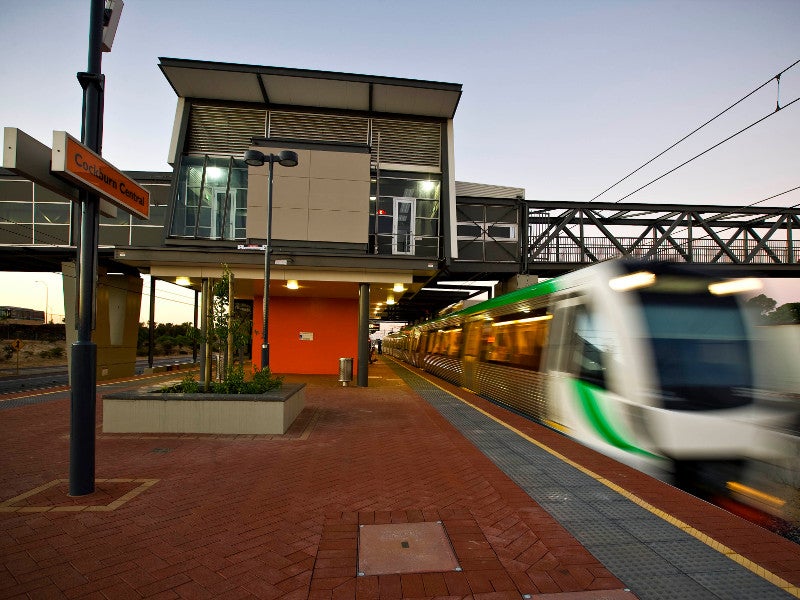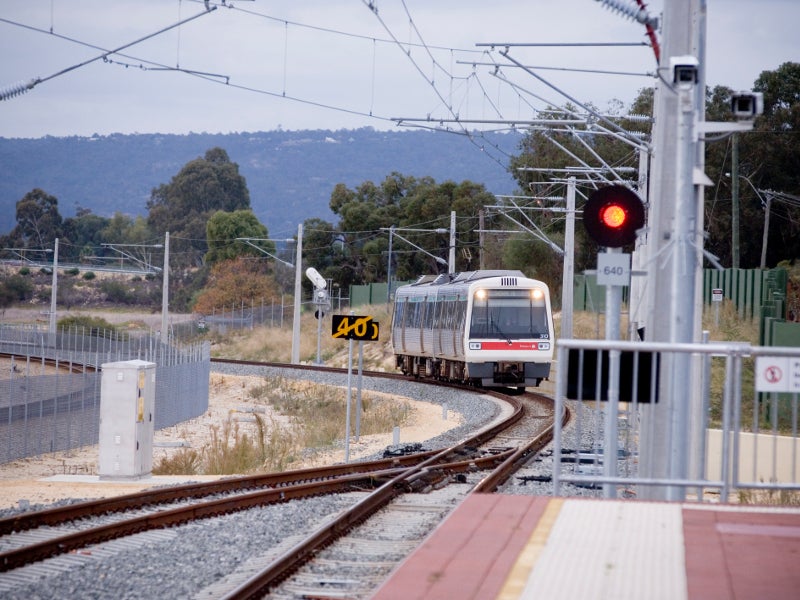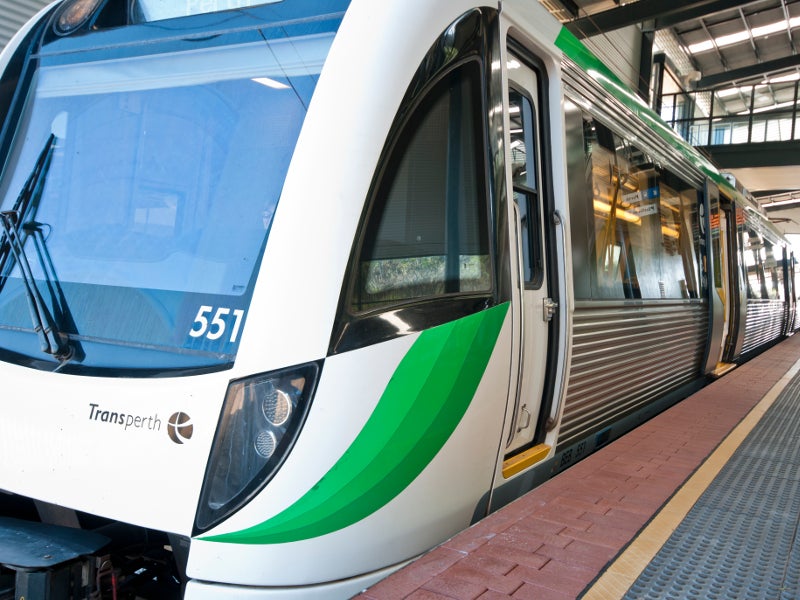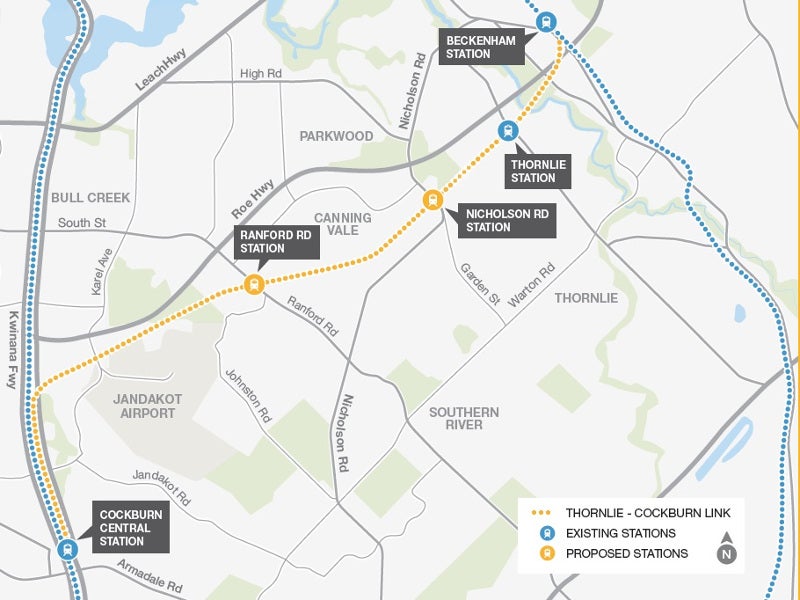Thornlie-Cockburn Link is the proposed first east-west railway link in Perth to connect the Mandurah and Armadale lines, passing through the existing rail corridors in south-east suburbs of Perth.
To be operated by the Public Transport Authority (PTA), the new line will provide a flexible rail connection within the city and support development across the southern suburbs. It will also create employment, sporting, and recreation opportunities at Canning Vale, Cannington Strategic Metropolitan Centre, Burswood Peninsula, and the eastern central business district (CBD).
The estimated cost of the project is A$535.8m ($379.3m), which comprises A$350m ($247.7m) from the Australian Government, with the remainder being funded by the Western Australian Government.
Construction of the project is expected to be started in late-2019 and is scheduled for completion in 2021.
Thornlie-Cockburn Link details
Thornlie-Cockburn Link will be a 14.5km-long railway line from Thornlie to Cockburn Central stations. The project will also involve duplication of the 3km-long single-track railway line between Beckenham Junction and Thornlie Station.
Relocation of 11km of freight lines will be completed and a footbridge will be built at Elliot Place to replace the pedestrian level crossing.
The Canning River Rail Bridge will be duplicated and the Ranford Road Bridge will be modified as part of the project.
Thornlie-Cockburn Link will have 11 turnouts, including five crossovers and a turnout that enables the dual Thornlie tracks to become a single track towards the Cockburn Central Station dock-style platform.
Details of the new stations at Thornlie-Cockburn Link
The proposed railway line will involve the construction of two stations at Nicholson Road and Ranford Road.
Nicholson Road station will have access from Canna Drive, which is located between the Willow Pond Reception Centre and the Police Station. It will also have the provision to be connected to the north of the rail corridor in the future.
The station will offer a 26-minute journey to Perth and will accommodate up to 2,350 boardings a day by 2031. It will also feature seven bus stands, 1,000 parking spaces, and ten u-rail and two bike shelters.
Ranford Road station will offer a 29-minute journey to Perth and is expected to accommodate 1,985 passengers a day by 2031. The station can be accessed through the new Jandakot Airport Eastern Link Road situated south-east of the station.
It will feature 400 parking spaces, a bus interchange, 12 bus stands, and ten u-rail and two bike shelters. Both stations will have passenger toilets, escalators, and stairs and will offer universal access for all passengers.
Improvements to the existing stations
Thornlie-Cockburn Link will upgrade and transform the existing Turning Thornlie Station to a through station and add a new platform at Cockburn Central Station.
The current island platform at the Cockburn Central station will be extended to serve a third dead-end line to be built between the existing Mandurah Lines.
All stations will feature vending machines, passenger ticketing / information systems, staff amenities, station administration offices, and connecting pathways for cyclists.
Rolling stock details
Thornlie-Cockburn Link will use the existing Thornlie Line A-Series trains based at the Claisebrook Depot in east Perth.
The four-car train sets will be replaced by six-car train configurations under the METRONET Railcar Programme. The stations will be able to accommodate new trains, which will be longer than the A-Series trains.





